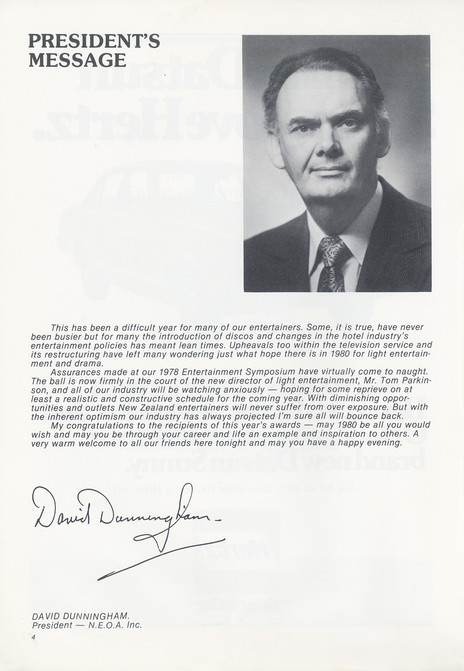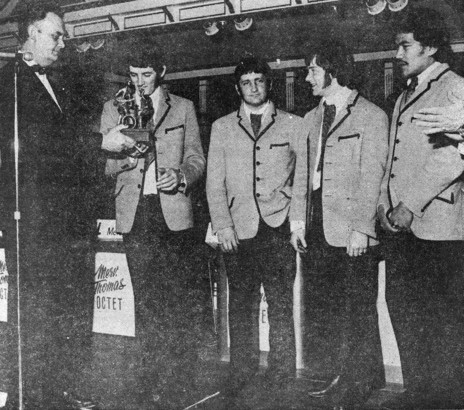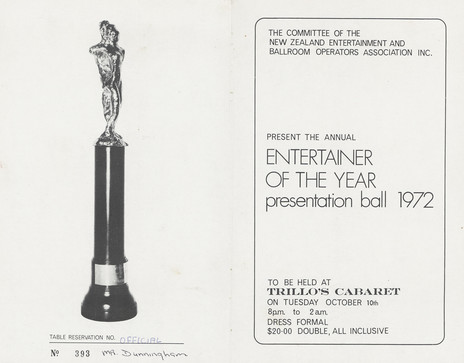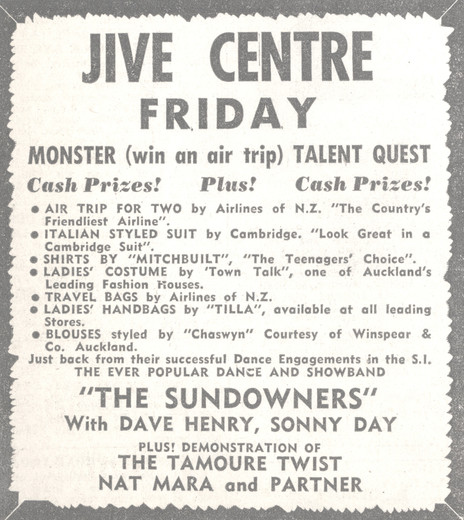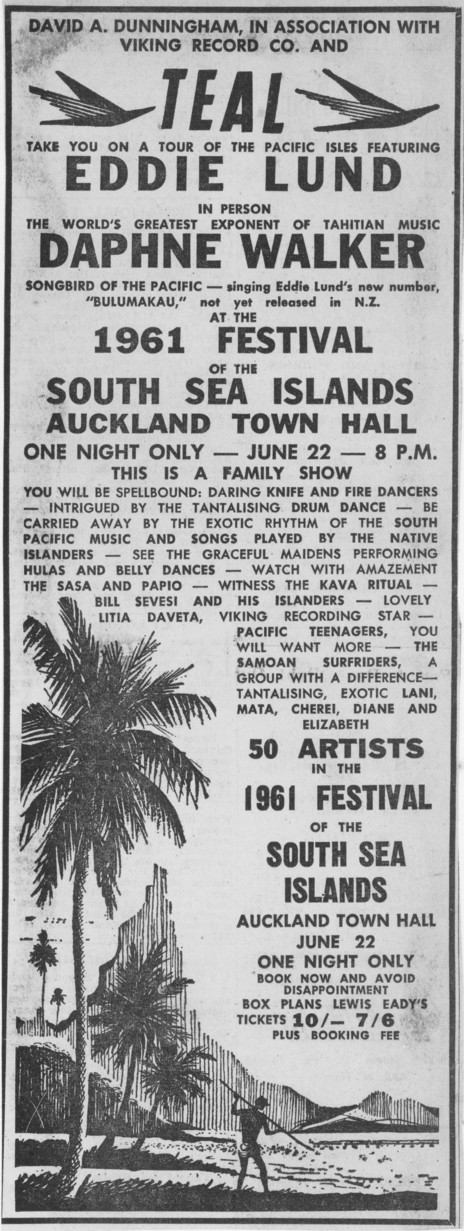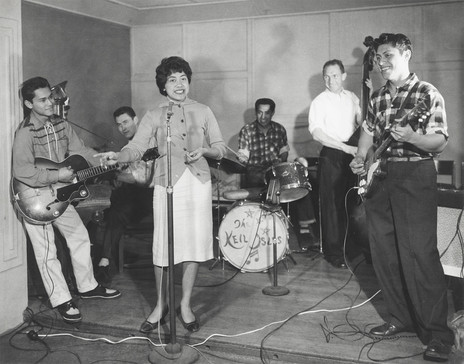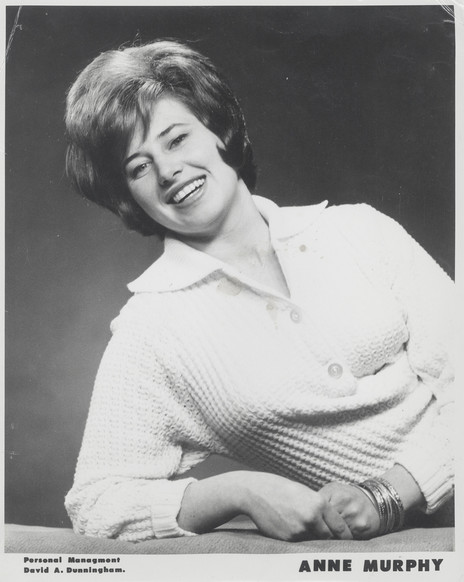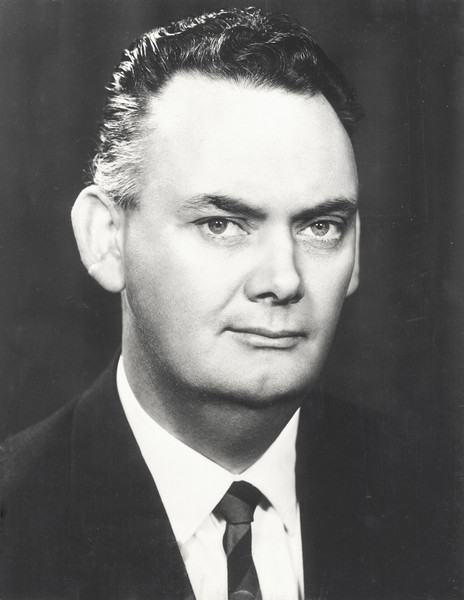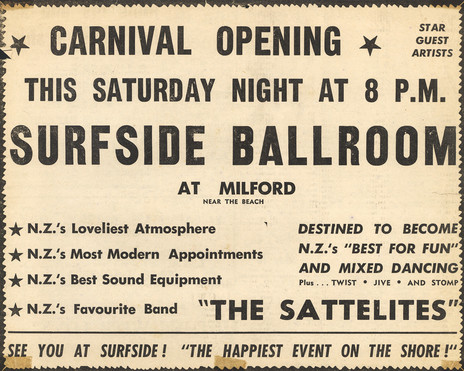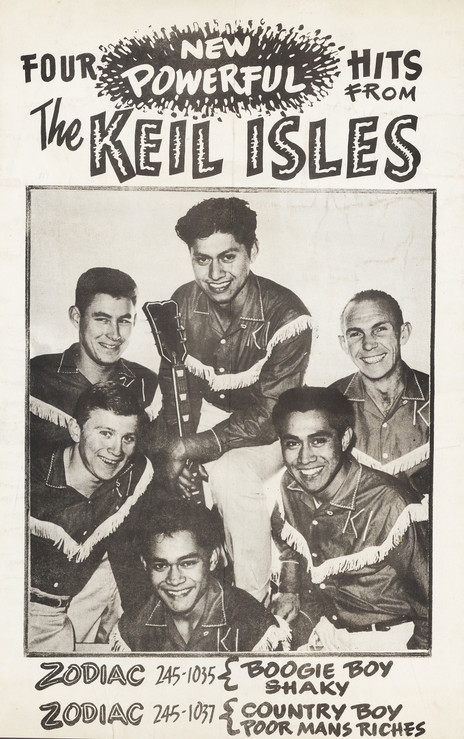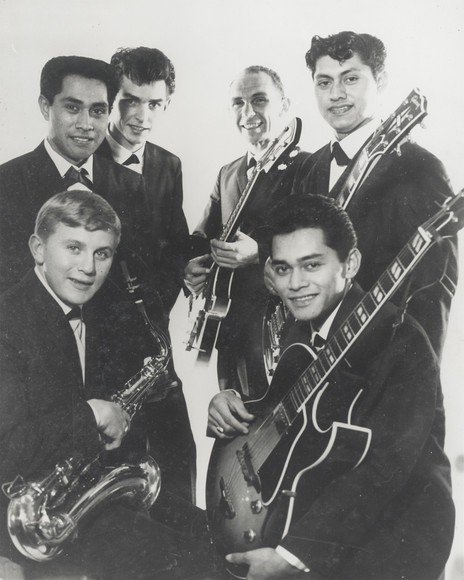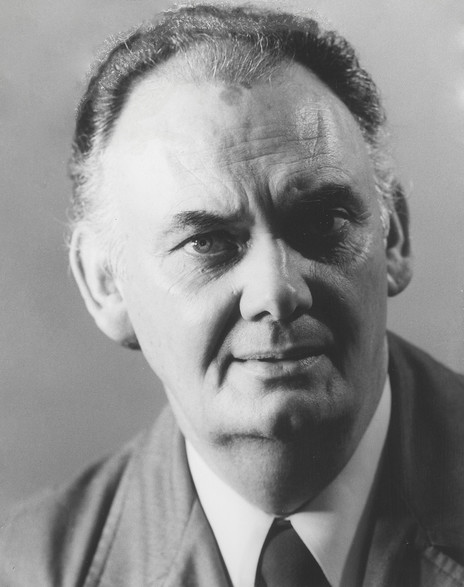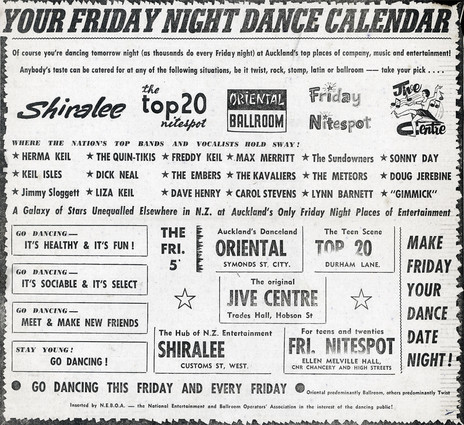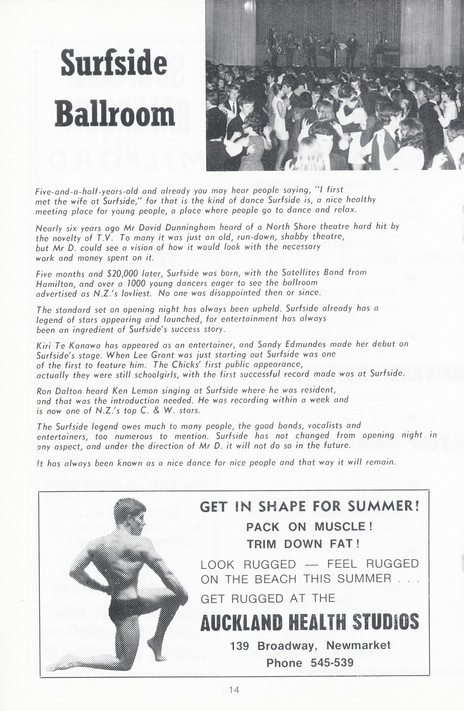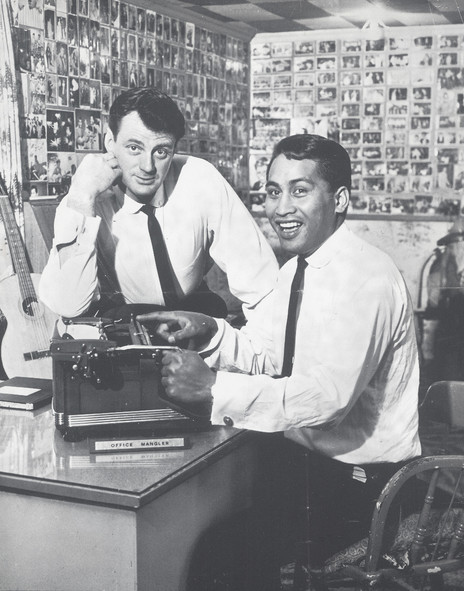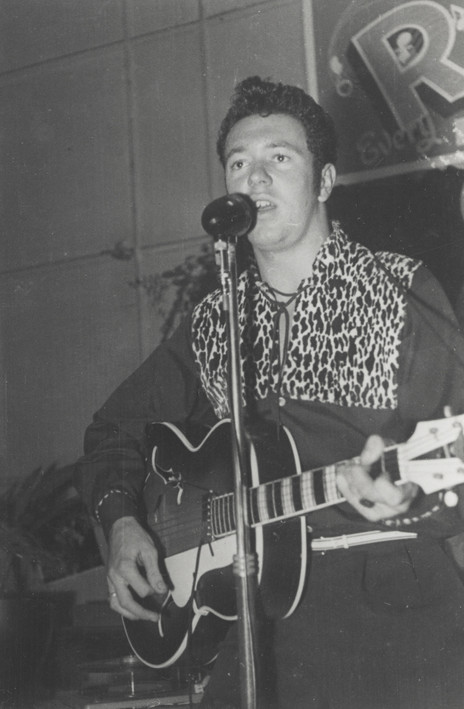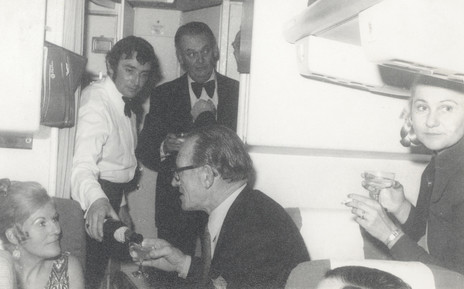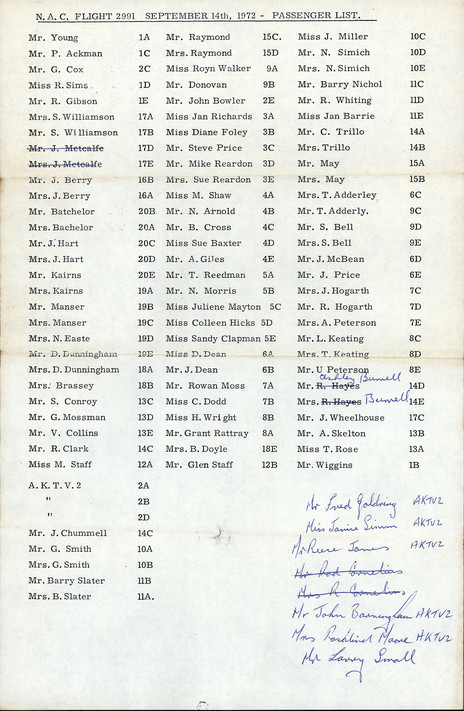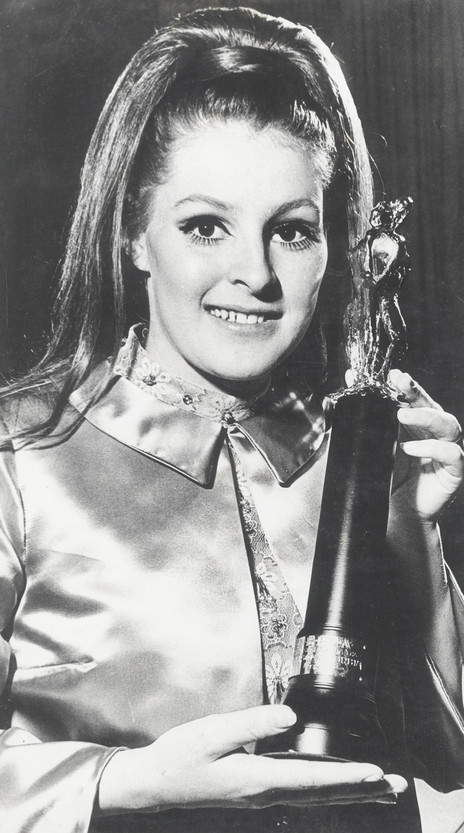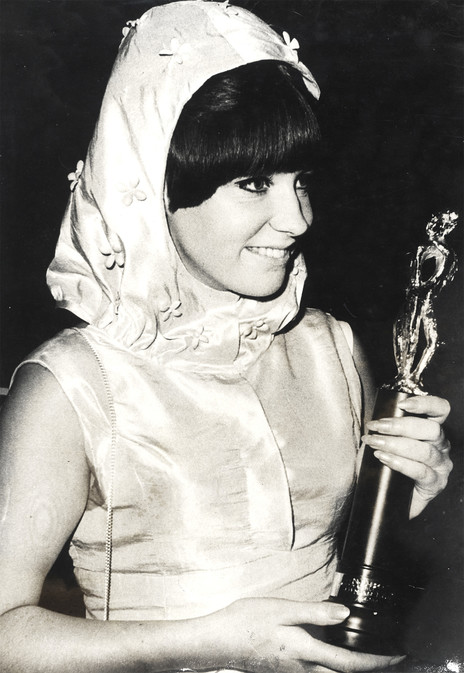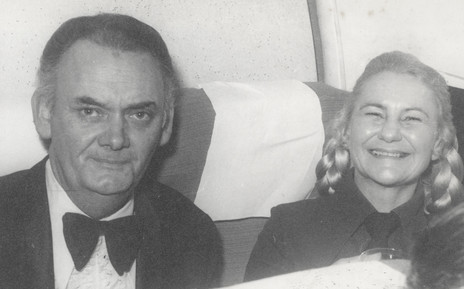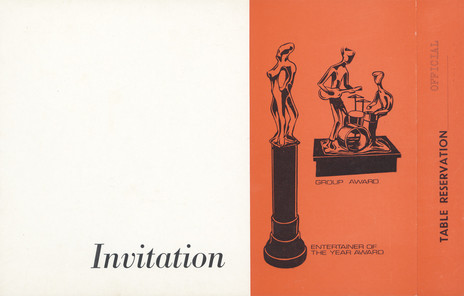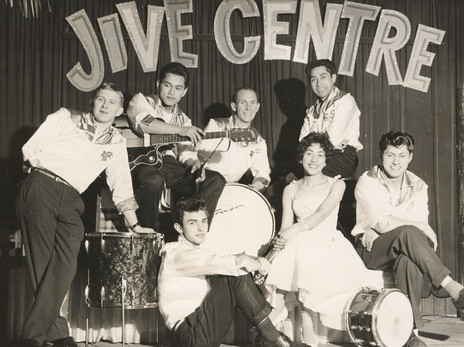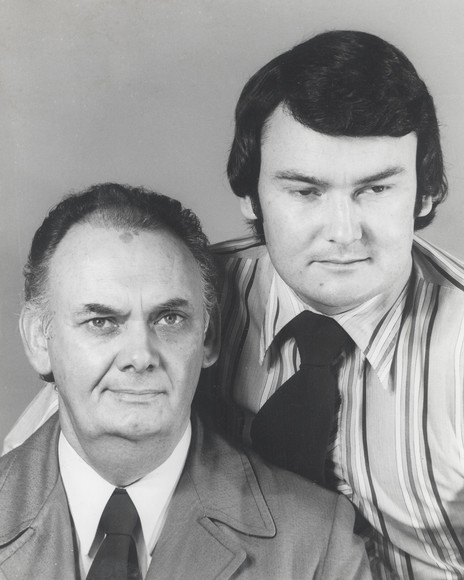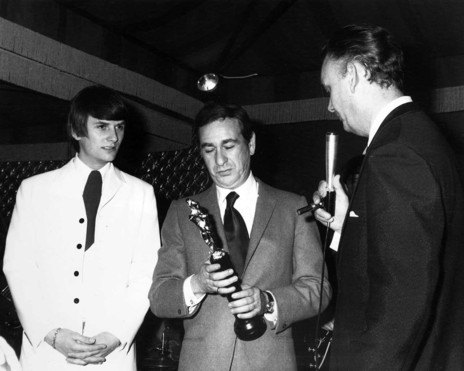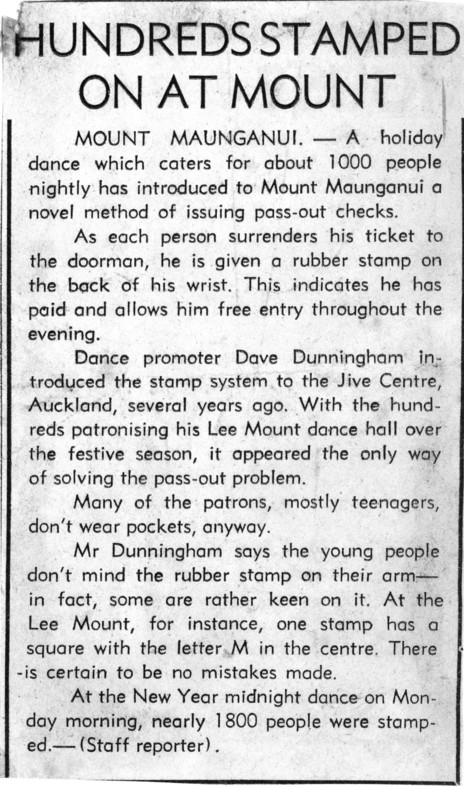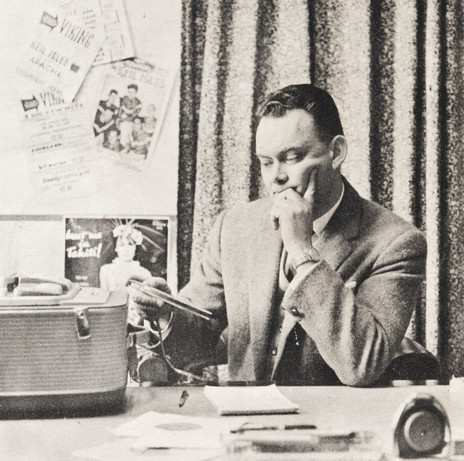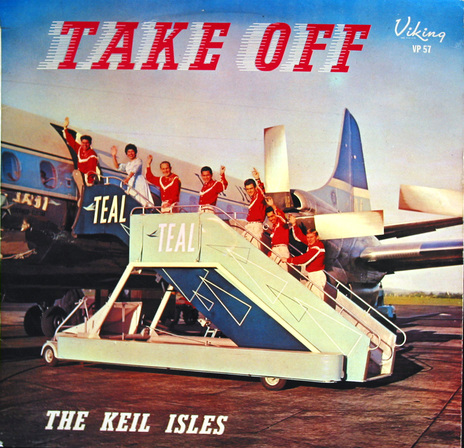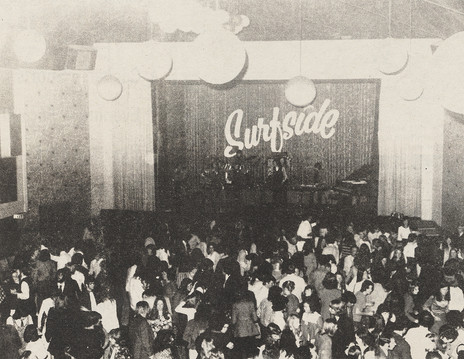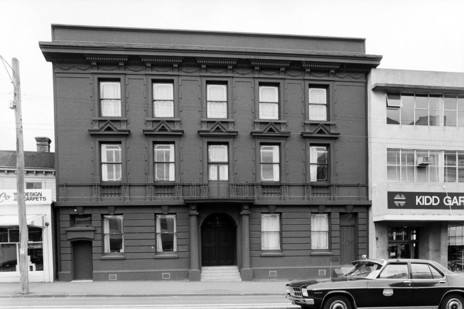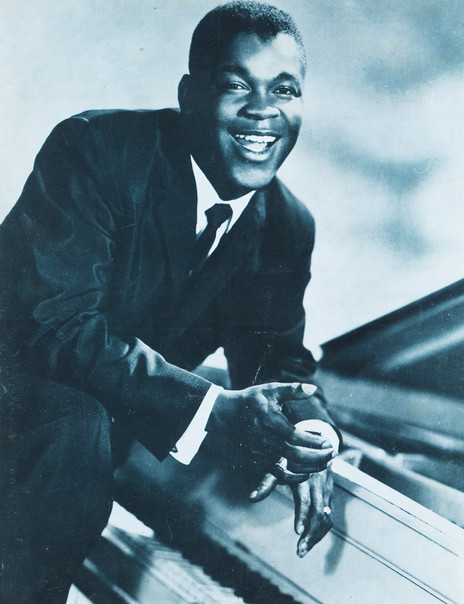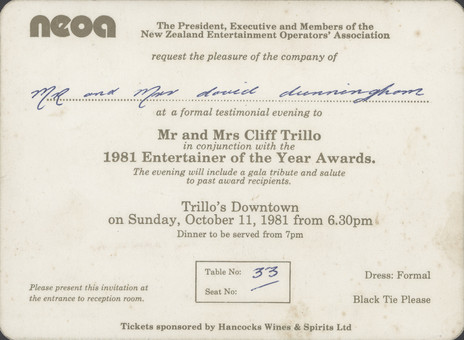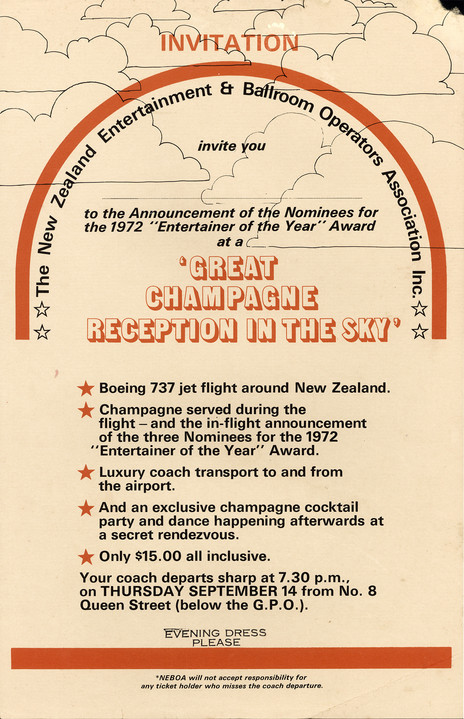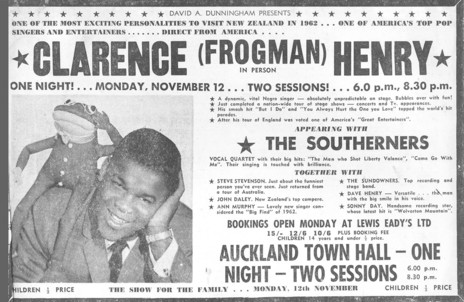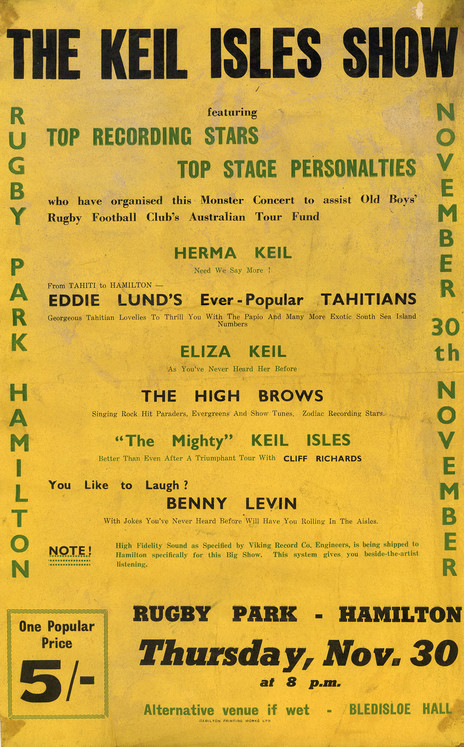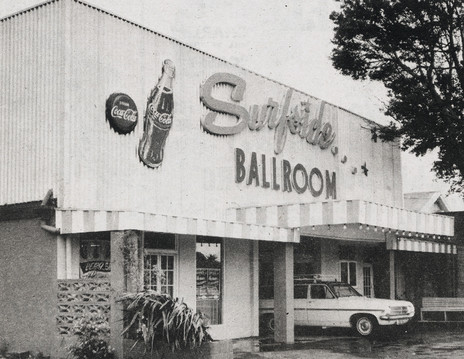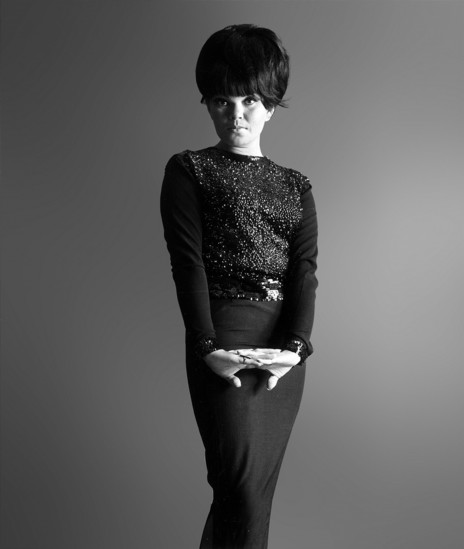Dunningham was an only child, with an ear for music; he studied classical piano for nine years and had a large collection of classical recordings. Others in the family who were musical include his cousin, Neil Dunningham (trombonist and drummer in many jazz bands, and percussionist with the Symphonia of Auckland), and his nephew Paul Dunningham, who played drums for Mi-Sex and Coup D’Etat.
The future promoter’s early employment history was varied: a stint in the army during World War Two, followed by a brief spell as a journalist. He then worked as a public relations assistant and clerk before going into partnership with Mrs Lee Brassey in a t-shirt manufacturing business on the floor above the Yugoslav Hall on Hobson Street, Auckland.
Rock’n’roll was not long on the scene in New Zealand when Dunningham, his partner Lee Brassey and jazz drummer Frank Gibson Sr came up with the idea of a venue catering exclusively to young Aucklanders who wanted to jive to the latest dance. In September 1955, HMV (NZ) popular singer Johnny Cooper released a version of ‘Rock Around the Clock’ (after the company realised its mistake turning down the Bill Haley version).
‘Rock Around the Clock’ was used in the 1955 film Blackboard Jungle, and rock’n’roll dancing soon became a craze. Dance halls around the country banned it, restricted it to one song a night, or ran a rope across the dance floor to separate jivers from ballroom dancers.
A year later, the film Rock Around The Clock was released at the Regent Theatre on Queen Street. In the same week, on Friday 5 October 1956, a queue went around the block on Hobson Street waiting for the Yugoslav Hall to open at 8pm. Once inside, so many dancers hit the floor that the window of Maurice Kain’s fabric store downstairs started to bulge in time to the music. Dunningham managed to get everyone to jive closer to the walls and the next week he went looking for a new dance hall. He found one up the road at the historic Trades Hall, at 157 Hobson Street, which had recently been vacated by Ted Croad’s Big Band.
Frank Gibson Sr put together the Jive Centre’s first rock’n’roll band for Dunningham, featuring some top-class jazz men: Merv Thomas (vocals, trombone), Frank Gibson Sr (drums), Dave Foreman (trumpet), Jack Shanks (piano), Don Pullan (bass) and Bernie Allen (saxophone). Remarkably there was no guitar, but Gibson later added Johnny Bradfield.
Because rock’n’roll was not available on local radio or in record shops, Merv and Bernie sat through Rock Around The Clock numerous times, transcribed the music and lyrics then added the tunes to the band’s repertoire.
None of the musicians had any real idea what they were doing, they were all dance hall and ballroom players, but as Merv Thomas later remarked, “The crowd had come to dance, and if we played ‘God Save The Queen’ at the right tempo they’d have jumped up on the dance floor jiving!”
When the word got around that the sign outside the Jive Centre read, “Ballroom Dancing Prohibited”, the venue saw full houses of 600-1000 dancers every weekend.
Bruce Kaplan, a junior reporter on the Auckland Star, reported: “The first New Zealand all-jive dance hit Auckland with an impact that the city won’t forget for some time to come. The venue was packed to the seams till the cats were ‘crawling up the walls’.”
Johnny Devlin asked if he could sing a song with the Jive Centre band. The crowd went wild.
In January 1958 Dunningham was introduced to a young Johnny Devlin who asked if he could sing a song with the band. The crowd went wild. Dunningham immediately gave him a residency, signed him to a contract and sent him home to Whanganui to pick up his things and quit his job at a bank. Devlin was invited to board with the Dunninghams in their Greenlane house, where Dave’s wife Shirley mothered him. She was a hairdresser and dyed Devlin’s hair black. The Dunningham’s son Grant recalls that he had to vacate his bedroom for Devlin and had to sleep in the sunroom for the next two years.
Dunningham introduced Devlin to promoter Phil Warren and organised his first recording session. Merv Thomas engineered two songs using his home-built equipment and Dunningham produced the session. He paid the costs and pressing, with Warren arranging distribution through his fledgling Prestige Records company.
On Anzac Day 1958, with Frank Gibson’s All Stars, Devlin made the recording at the Jive Centre with the gents’ toilet being used as the echo chamber. It wasn’t perfect but it worked. ‘Lawdy Miss Clawdy’ b/w ‘When My Blue Moon Turns To Gold Again’ was released on Prestige in June and sold very well. Dunningham supplied music stores, and promoted the records at his dances.
Auckland Star columnist John Berry lauded Devlin and by August ‘Lawdy Miss Clawdy’ had sold 10,000 copies, so Devlin returned to recording, this time at Bruce Barton’s studio on Wellesley Street with the Bob Paris Combo playing the backing. By November his three singles had sold 50,000 copies and the Kerridge Organisation offered to book a national tour through their theatres, with a new band, The Devils, led by blind multi-instrumentalist Claude Papesch.
This was getting too big for Dunningham, so he handed Devlin’s management over to Phil Warren. Business partner Lee Brassey supplied Devlin with stage shirts featuring special “come-apart-easily” sleeves. Devlin recalled, “She kept making them for me when I was on tour and sending them down because, well, I was running out of shirts.” Eventually Warren found Devlin work in Australia and Dunningham tore up his contract and wished him good luck.
After a year, the band at the Jive Centre was replaced by the Bob Paris Combo, who had a residency at the Māori Community Centre. The new group backed singers such as Eddie Howell and Ricky May, and specialised in instrumentals in the styles of Duane Eddy and Link Wray. Later on, Herma Keil and the Keil Isles then Sonny Day and the Sundowners played regularly.
Surfing became the next big craze in 1962 and Dunningham showed surfing movies at holiday resorts around the country and ran two cabarets at Mt Maunganui over Labour Weekend and the summer holidays, at the Peter Pan and the Sea Mount.
In December 1962 Ray Columbus and the Invaders played a month-long residency at Auckland’s Jive Centre while Dunningham toured the country with New Orleans singer Clarence “Frogman” Henry, who had two huge hits with ‘(I Don’t Know Why I Love You) But I Do’ and ‘You Always Hurt the One You Love’. Henry, who also played piano, was backed by Sonny Day and the Sundowners and was joined by mime Steve Stevenson, comedian John Daley, vocalists Anne Murphy and Dave Henry, and Christchurch vocal quartet The Southerners. (Dave Henry, another of Dunningham’s acts, was signed to Zodiac and recorded the Frogman’s novelty hit ‘Ain't Got No Home’.)
Dunningham and Eldred Stebbing jointly set up the Zodiac Icon record label and a number of Dave’s artists recorded for them, using the Jive Centre or the Sandringham School hall. Stebbing engineered the sessions and released tracks with the Bob Paris Combo and Merv Thomas’s Dixielanders in 1959, the Keil Isles in 1960, and Sonny Day and the Sundowners in 1963. When Dunningham began having problems with The Sundowners in 1964 he fired them from their summer residency at his Mt Maunganui venue.
In 1963 a group of people actively involved in the entertainment industry in New Zealand joined together to form the National Entertainment and Ballroom Operators’ Association (NEBOA). Dave Dunningham was president, Phil Warren vice-president and Joe Wheelhouse was secretary. Shirley Dunningham was a driving force behind the setting up of this association and the design of the sculpture for the chosen artist each year.
The first NEBOA annual ball was held at the Peter Pan Cabaret on 8 September 1964, and the following year the first New Zealand Entertainer of the Year Award was presented to Dinah Lee. Other artists to later be crowned were Howard Morrison, Mr Lee Grant, John Rowles, Kiri Te Kanawa, Rob Guest and Prince Tui Teka; the list covers many of New Zealand’s top entertainers. Dunningham retired as president in 1985.
Soon after surf music struck the country in 1962, it was followed by the Twist.
Soon after surf music struck the country in 1962, it was followed by the Twist, then Beatlemania hit with the Beatles touring in June 1964. The Jive Centre’s resident band The Nightbeats did their best, but numbers were dropping as other dance venues began to open in Auckland’s CBD; among them were the the Shiralee (Customs St, later the Galaxie), Monaco (Federal St), and Bali Hai Coffee Lounge (O’Connell St). The Merseymen held court at the Beatle Inn on Little Queen Street, featuring Dylan Taite on drums.
In 1963 Dunningham closed the Jive Centre and, moving to more adult entertainment, established the Surfside Ballroom in the old Picturedrome Theatre in Milford, perhaps named after Sydney’s Surf City in Kings Cross, where Ray Columbus and the Invaders had a residency. Surfside opened in December 1963 with a mezzanine balcony, ladies’ powder room, a sandwich bar, and stringent dress regulations; it could hold 1000 dancers.
Over the years it featured such bands as The Satellites, The Sierras, the Silhouettes, Glyn Tucker and the Gremlins, Tom Sharplin and the Cadillacs, and Robbie Lavën and Marion Arts with the 1953 Memorial Society Rock’n’Roll Band. Rick Roff started his career there before launching Rick’s Café Americain and Rick’s Blue Falcon. A young Kiri Te Kanawa performed a West Side Story selection at Surfside, and was later reprimanded by her coach Sister Mary Leo.
Dunningham’s wife Shirley said he ruled the Surfside Ballroom with an iron hand and good staff. “When teenagers were naughty,” she said, “they were banned from the ballroom for a month.” Surfside was demolished in 1980 to make way for the Milford Shopping Plaza.
In 1964, local 14-year-old Allison Durbin won a talent quest at Surfside, prompting Dunningham to contact Eldred Stebbing at Zodiac Records. Sandy Edmonds made her debut there, The Chicks first performed there and Surfside was the first Auckland venue to feature Mr Lee Grant and Bridgette Allen. Two very popular regular vocalists were Dinah Lee and Ray Columbus.
In 1962 Dunningham and Kerridge-Odeon toured Helen Shapiro through the country, with support acts Ray Woolf, Peter Posa and Bob Paris. The following year, with Benny Levin, Dunningham toured the South Sea Island Festival with MC George Tumahai. The troupe consisted of 35 dancers, singers and musicians from various Pacific islands, brought by Gilbert Thong from his Cabaret Club in New Caledonia.
In 1970 Dunningham floated a plan to bring maimed Vietnamese children to Auckland’s old St Helens Hospital on Pitt Street for rehabilitation. He told the 8 O’Clock newspaper in August, “RNZAF Hercules aircraft make regular visits to South-East Asia and return virtually empty. They could be loaded with crippled and maimed children who have little hope of receiving adequate medical treatment in their own country.” He asked for like-minded people to write to him and a committee to be created. The Auckland Professional Mannequins Association organised a “Halloween Happening” and raised $300.
In the mid-1970s Dunningham toured the Moscow Spectacular and Romanian Spectacular cultural shows to New Zealand, Australia, and Singapore. He was employed by the Singapore Tourist Bureau to advise on the development of Santosa Island.
Dunningham loved children and ran school holiday programmes in Auckland and Mt Maunganui. He sponsored and supported many businesses in the sports and entertainment industry.
His son Grant recalls, “In association with Wilson & Horton he purchased a number of sites in Auckland and around the North Island to introduce drive-in movies to New Zealand. The government of the day voted and the project was lost by the casting vote of the Prime Minister, Sir Robert Muldoon.”
Dunningham, in association with Hong Kong business associates, founded Pacific Air Freight Limited in 1985 and obtained an airfreight licence from the New Zealand Government to operate freight services around the Pacific Ocean. Sadly the global financial crash in 1987 saw export business drop off. Grant recalls, “Dad had other ‘wild’ ideas, such as a gondola from Orakei to Rangitoto – imagine the Greenies approving that!”
In 1980 Dunningham said he planned to move to Singapore to open a health resort.
Dunningham claimed to be retired in a June 1980 Auckland Star article, saying he planned to move to Singapore to open a health resort with his wife Shirley and son Grant, based on the Wiedemann Clinics in Bavaria, where injections of lamb foetus were administered. He also planned to introduce dry-cell therapy and pressurised oxygen chamber treatment.
He had quickly moved on from show business. In a 1977 newspaper article, Dunningham commented on the state of entertainment in the country. “New Zealand show people are not doing enough, and the entertainment industry is suffering. The magic has gone from the scene. It’s not difficult to go back four or five years and look at people like Howard Morrison at his peak, Lee Grant and Allison Durbin. They were household names. Who could you name in that class today? Recording studios are closing, big overseas companies are pulling out of local production and few local acts are being recorded. Local artists lack stagecraft and professionalism, the standard is so bad. Who could you put on at the Town Hall for instance to open for a good overseas act?”
David Dunningham died on 23 July 2002 after developing Parkinson’s. He was survived by his two sons and wife of 53 years, Shirley.
